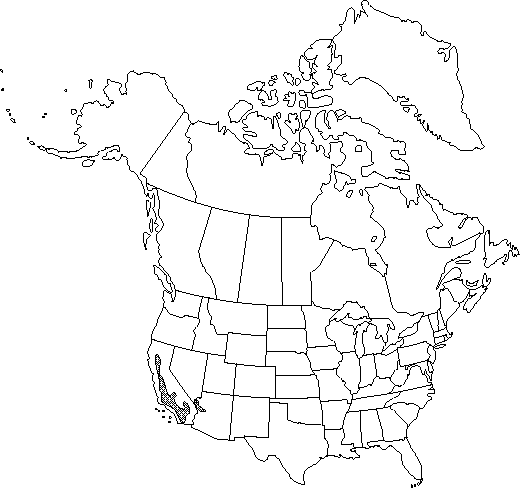Juniperus californica
3: 352. 1854.
Shrubs or trees dioecious (rarely monoecious), to 8 m, multistemmed (seldom single-stemmed); crown rounded. Bark gray, exfoliating in thin strips, that of smaller and larger branchlets smooth. Branches spreading to ascending; branchlets erect, terete, about as wide as length of scalelike leaves. Leaves light green, abaxial glands elliptic to ovate, conspicuous, exudate absent, margins denticulate (at 20×); whip leaves 3–5 mm, not glaucous adaxially; scalelike leaves 1–2 mm, not overlapping, or rarely overlapping by ca. 1/5 their length, generally flattened, apex acute to obtuse, closely appressed. Seed cones maturing in 1 year, of 1 size, with straight peduncles, globose, (7–)9–10(–13) mm, bluish brown, glaucous, fibrous, with 1(–2) seeds. Seeds 5–7 mm.
Habitat: Dry, rocky slopes and flats
Elevation: 750–1600 m
Distribution

Ariz., Calif., Nev., Mexico in Baja California.
Discussion
Although two races, differing in volatile leaf oils, were described by F. C. Vasek and R. W. Scora (1967) and confirmed by R. P. Adams et al. (1983), no differences were found in volatile wood oils (R. P. Adams 1987). To date, no morphological characters appear to be correlated with the chemical races. No other Western Hemisphere species of Juniperus has been found to have leaf-oil races.
Selected References
None.